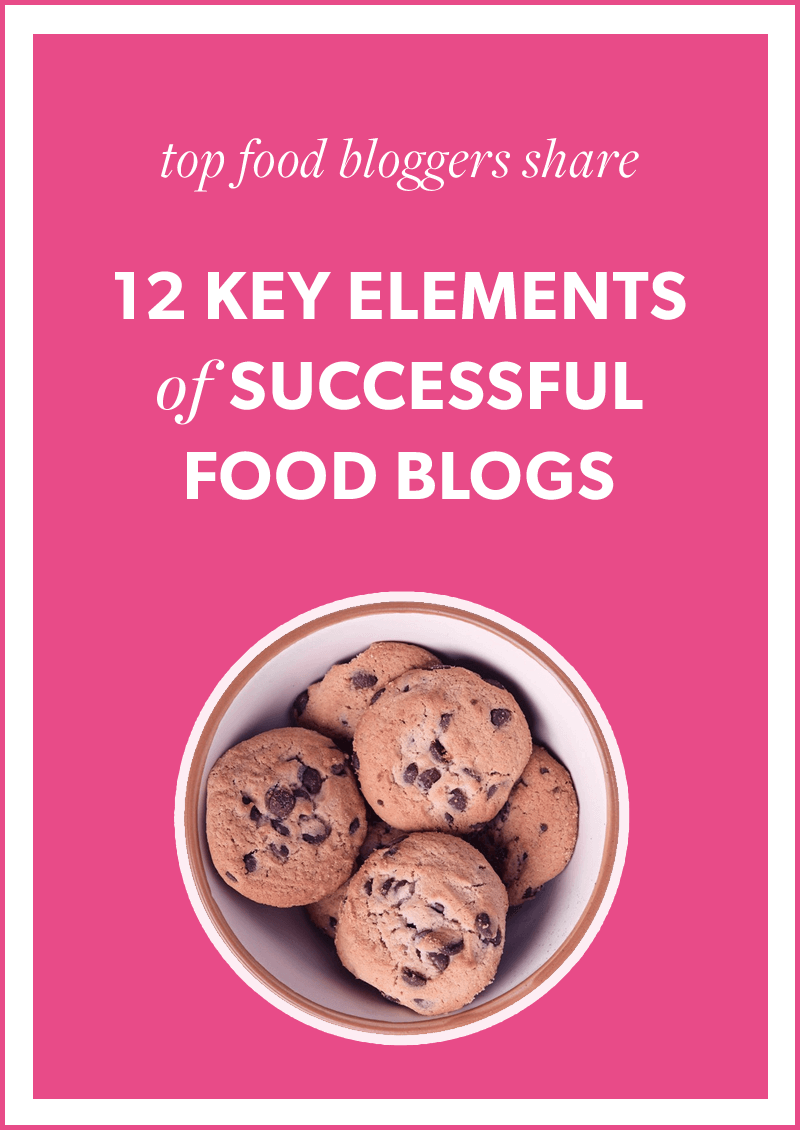12 Key Elements of a Successful Food Blog
What Top Food Bloggers Want
Earlier this year, I contacted almost 100 top food bloggers including those who were past winners and nominees of Saveur Food Blog and IACP awards. I wanted to learn from them about the current state of food blog design and then use this to help improve my work by better understanding a broad range of food bloggers’ perspectives on what’s important to them and the challenges they face. The food bloggers were very thoughtful with their replies and generous with their time. I am thankful for their insight into what they think makes a successful food blog.

Yes, pin this for later!
The 12 Key Elements of a Successful Food Blog
#1 Recipes which work
Building trust is at the core of food blogging so recipes must be tested thoroughly and work as they say they do. Food bloggers value carefully-written content which doesn’t have poor spelling and grammar and isn’t too long, confusing or ambiguous.
Ensuring recipes are easy to read and print out (without all the unnecessary parts) is important. Food bloggers particularly pointed out that they don’t like small grey text.
Bloggers particularly did not like newsletter pop-ups or ads interfering with their reading of a recipe!
#2 Beautiful photography
Food bloggers were very specific about both the positive and negative aspects of this. Images should be large, professionally styled, well-lit and beautiful. They should be correctly sized to fit the blog and optimized. There should be an image of the finished result at the start, enough images to clearly illustrate the stages of the recipe and the finished result again at the end.
However, they really did not like it when food blogs overdo the number of images! It makes the site slow to load, annoying to have to scroll through and off-putting if all the images appear to be repetitive, “cheesy” or “Pinterest-whoring”.
Their overall advice to new bloggers is to invest in learning the art of good food photography.
#3 Well-organized recipe index
Of all blog genres, food blogs have some of the most evergreen content. Ensuring that food blogs have a well-organized recipe index is vital.
Bloggers felt that many food blogs aren’t easy to explore in useful ways that they want. For example, exploring recipes by dietary needs (paleo, grain-free, vegan, sugar-free, dairy-free). Many other ways were covered too: course, main ingredient, theme, season, difficulty, all ingredients etc.
Over time, recipes can become a mess to explore – it’s well-worth the effort to go back and tidy up their recipe organization.
#4 Prominent, easy-to-use search bar
Unlike other blog genres, people regularly use search bars to find past recipes. Google’s site search is better than WordPress’ inbuilt search.
Keeping an eye on what people are searching for on your site can help you improve your readers experience too – if you have many search queries for “chicken”, ensure you have another easy way to navigate to all chicken recipes.
#5 Mobile-friendly aka responsive site
This is a very important issue for food bloggers – not only passing Google’s mobile-friendly test – but ensuring that ads work well and the site is easy to use on mobiles, tablets and desktops.
Many people (including myself!) cook using their phone or tablet to show their recipes.
#6 Fast loading
Food bloggers kept referring to site loading speed as an important issue – whether it was due to ads, large images, too many images, the homepage not showing post excerpts, specifically the site speed on mobiles or something else. Food blogs can be some of the slowest blogs out there!
#7 An about page
People want to know who is behind a blog and feel a sense of connection with what they’re passionate about and inspired by. Cooking is quite an intimate and personal thing, and food bloggers need to ensure they have an about page which is current and detailed enough to help form an initial bond.
#8 Homepage with excerpts
Food bloggers said that it was important to not show full posts on the homepage, so that readers could quickly scan recent recipes and then click through if one interested them. It also meant that the homepage is faster to load.
#9 Interaction with readers
Answering questions and responding to comments from readers is very important on food blogs. While food bloggers admitted it’s not always possible to answer every question, investing regular time into doing was valued. Readers are often pressed for time when asking a question as they can be in the middle of cooking the recipe.
#10 Unique brand
Food bloggers were passionate about this topic. The following are a selection of the types of comments they provided. Have a specific focus, a unique point of difference, and something memorable about your blog. Be creative, be inspiring but more importantly, be authentic: do it with your heart. Have a strong voice. Your blog’s design, writing and photography should reflect your personality. Don’t try to please everyone. Don’t make monetization your primary focus and lose your blog’s spirit.
#11 Optimizing for Pinterest
Food bloggers are into social media and email newsletters in a big way utilizing Facebook, Instagram, YouTube, Twitter, and even G+, but the number one driver of traffic they’re focusing on is Pinterest. Not only do recipes need to be optimized for sharing on Pinterest with tall images and rich pins, but have clear calls to pin and multiple places encouraging following on Pinterest. They’re using group boards to increase their pin exposure, along with experimenting with promoted pins.
#12 Professional design
Food bloggers want their content to be the focus of their readers attention, rather than other design elements. They value investing in professional blog design. A clean, uncluttered design which is user-friendly and easy-to-navigate is desired. Embrace minimalism and avoid busyness. Food bloggers didn’t like too many ads (especially ones which weren’t relevant to food), pop-ups and automatically rotating sliders.
